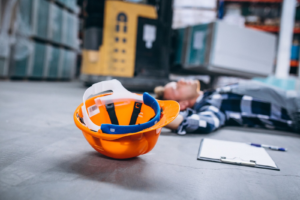
The Importance of Industrial Hygiene in Facility Planning
When it comes to facility planning in industrial settings, there are many factors to consider, from layout and equipment placement to workflow optimization and efficiency.
However, one aspect that is often overlooked is industrial hygiene and occupational health. Ensuring a safe and healthy work environment is crucial for the well-being of employees and the success of the business.
In this article, we’ll explore the importance of industrial hygiene and occupational health in facility planning, and how proactive measures can promote a safer and more productive workplace.
Understanding Industrial Hygiene:
Industrial hygiene is the science of anticipating, recognizing, evaluating, and controlling workplace hazards to ensure the health and safety of workers. This encompasses a wide range of factors, including exposure to hazardous substances, ergonomic risks, noise levels, air quality, and physical hazards such as slips, trips, and falls.
Industrial hygienists are trained professionals who assess workplace conditions, identify potential hazards, and recommend control measures to mitigate risks and protect workers’ health.
The Importance of Occupational Health:
Occupational health focuses on the physical, mental, and social well-being of workers in relation to their work environment. It addresses not only the prevention of occupational injuries and illnesses but also the promotion of overall health and well-being in the workplace.
Occupational health programs may include initiatives such as health screenings, ergonomic assessments, wellness programs, and mental health support services to support employees in maintaining optimal health and performance on the job.
Integration into Facility Planning:
Industrial hygiene and occupational health considerations should be integrated into every stage of facility planning, from the initial design phase to ongoing maintenance and operations.
This includes selecting appropriate materials and equipment that minimize exposure to hazardous substances, designing ergonomic workstations to reduce the risk of musculoskeletal injuries, and implementing effective ventilation systems to maintain indoor air quality.
Risk Assessment and Hazard Control:
Conducting thorough risk assessments is essential for identifying potential hazards in the workplace and implementing appropriate control measures to mitigate risks.
This may involve conducting air monitoring for hazardous substances, evaluating noise levels to prevent hearing loss, and implementing engineering controls such as machine guarding and ventilation systems to minimize exposure to physical and chemical hazards.
Employee Training and Education:
In addition to implementing engineering controls and administrative measures, providing employee training and education is crucial for promoting a culture of safety in the workplace.
Training programs should cover topics such as hazard recognition, proper use of personal protective equipment (PPE), emergency response procedures, and ergonomics principles to empower workers to protect themselves and their colleagues from workplace hazards.
Continuous Monitoring and Improvement:
Industrial hygiene and occupational health efforts should not end once a facility is operational. Continuous monitoring and evaluation of workplace conditions are essential for identifying emerging hazards and implementing corrective actions to address them.
Regular health and safety audits, employee feedback mechanisms, and incident investigations are valuable tools for identifying areas for improvement and ensuring ongoing compliance with health and safety regulations.
Conclusion:
In conclusion, prioritizing industrial hygiene and occupational health in facility planning is essential for creating a safe and healthy work environment for employees. By integrating health and safety considerations into every aspect of facility design, implementing effective risk assessment and hazard control measures, providing employee training and education, and continuously monitoring and improving workplace conditions, businesses can protect the well-being of their workers and promote a culture of safety and well-being in the workplace.
For expert guidance and assistance in prioritizing industrial hygiene and occupational health in your facility planning process, contact VMS Consultants today. With their expertise as a top industrial architect in Ahmedabad, Gujarat, and India, they can provide tailored Engineering Architecture & Project Management Services to create a safer and healthier workplace environment for your employees.
Let’s work together and ensure compliance with health and safety regulations while promoting the well-being of your workforce.






